Mahogany and mahogany veneer pedestal table
White marble top encrusted with samples of marbles, hard stones, antique Roman polychrome glass and a Roman micro-mosaic
Rome, Italy, first third of the 19th century
Probably by Francesco Sibilio
Total height: 77cm.
Top thickness: 4 cm.
Top diameter 94.5 cm.
Important pedestal table composed of:
- circular top in white Carrara marble inlaid with a band of “sea green” marble and 84 samples of hard stones, separated by shelves in black marble. In the center a Roman micro-mosaic representing a deer pursued by a dog, surrounded by tesserae in blue and yellow glass paste and two circles in pieces of glass: reticelli, murrina, millefiori” dating from the Hellenistic period 1st century BC. J. C – 1st ap. JC
- carved mahogany base with gadrooned belt and corolla shaft supported by an octagonal molded base.
Among the samples:
Porphyry, agate, lapis lazuli, malachite, jasper, portor marble, grand antique, brocatelle, granite, alabaster…
Some samples come from quarries that have been exhausted since antiquity, such as cipolin, red porphyry from Egypt or green porphyry from Greece and are therefore from excavations.
Our gueridon by its materials and its technique of realization is part of a series of furniture and objects produced in the first half of the 19th century in Rome under the effect of a craze for Antiquity and excavated objects. Trays of marquetry or marble samples became a specialty of Roman workshops, on the one hand thanks to the continuous arrival of ancient marbles from excavations and on the other hand thanks to wealthy and learned travelers visiting Rome in the part of the Grand Tour.
Several Roman craftsmen specialize in the manufacture of marble objects and more particularly table tops / pedestal tables inlaid with samples or marble marquetry, hard stones or micro-mosaics.
Among its artisans Francesco Sibilio specializes in the marquetry of antique glasses, the technique present on our set. He is also the first craftsman to combine antique glass tesserae with marble samples on his tops.
Francesco SIBILIO
Francesco Sibilio was not only interested in marbles but also in antiques in the broadest sense. It will be the first to combine micro-mosaics, marbles, semi-precious stones and antique glass tesserae as is the case for our spectacular tray. He collected pieces of antique glass and repolished them in order to exploit the richness of their colors. His talent allowed him to give glass an appearance or depth akin to that of agate. Most of these fragments can be dated from the 1st century B.C. to the 1st century A.D. Some come from glass plates or inlays, originally intended to imitate marble or semi-precious stones, such as porphyry or agates. Other fragments come from vases or glass dishes. These parts, which are generally convex, were heated and flattened under press before being reused.
A thorough examination reveals that the pieces of glass are held together with metal which has the particularity of reflecting light and giving an iridescent effect to the glass. Sibilio was able, better than anyone else, to take this technique to its peak. In addition, the thick white marble top is hollowed out to accommodate the different materials, which accentuates its depth.
Related works:
Only six tops are attributed with certainty to Francesco Sibilio, most of them are signed trays, we cannot mention four of them:
• top signed et dated 1824, d. 67,5 cm Casa d'Aste Babuino, Rome, Italy 9 April 2019
• top signed et dated 1824, d. 82 cm. Auction Christie's Paris 28 nov. 2017, lot 722.
• top signed et dated 1823, d. 64 cm. Auction Christie's London, 15 Dec. 1994, lot 244 & auction Christie's London, 30 sept. 1999, lot 128. Illustrated in Alvar-Gonzalez-Palacios «Lavori di Sibilio», «L'armadio delle meraviglie», Milan 1991, ill. 51.
• Top circa 1825, attributed to Francesco Sibilio, The collection of Mr Edric Van Vredenburgh, Auction Sotheby's London 6 June 2006, lot 98, d. 67,5 cm
The centre of our set is very close to the work of Francesco Sibilio, unfortunately in the absence of a signature given the few studies carried out on this subject and the lack of information prevents us from issuing an attribution with certainty. However, it is very likely that the talented and creative author of our set is Francesco Sibilio. This is evidenced by the mastery of the technique and the harmony achieved with marble samples and an ancient micro-mosaic in order to create a spectacular piece that perfectly reflects the know-how of Roman craftsmen through the centuries.
Comparative bibliography:
- González-Palacios, A., “Marmi, Pietre e Vetri: Lavori di Sibilio”, in Casa Vogue Antiques, March 1991, nr. 12, pp. 84-89.
- Newby, Martine S., “Francesco Sibilio and the reuse of Ancient Roman Glass in the Nineteenth Century”, in Annali 16 Congresso AIHV, London, 2003, p.401.







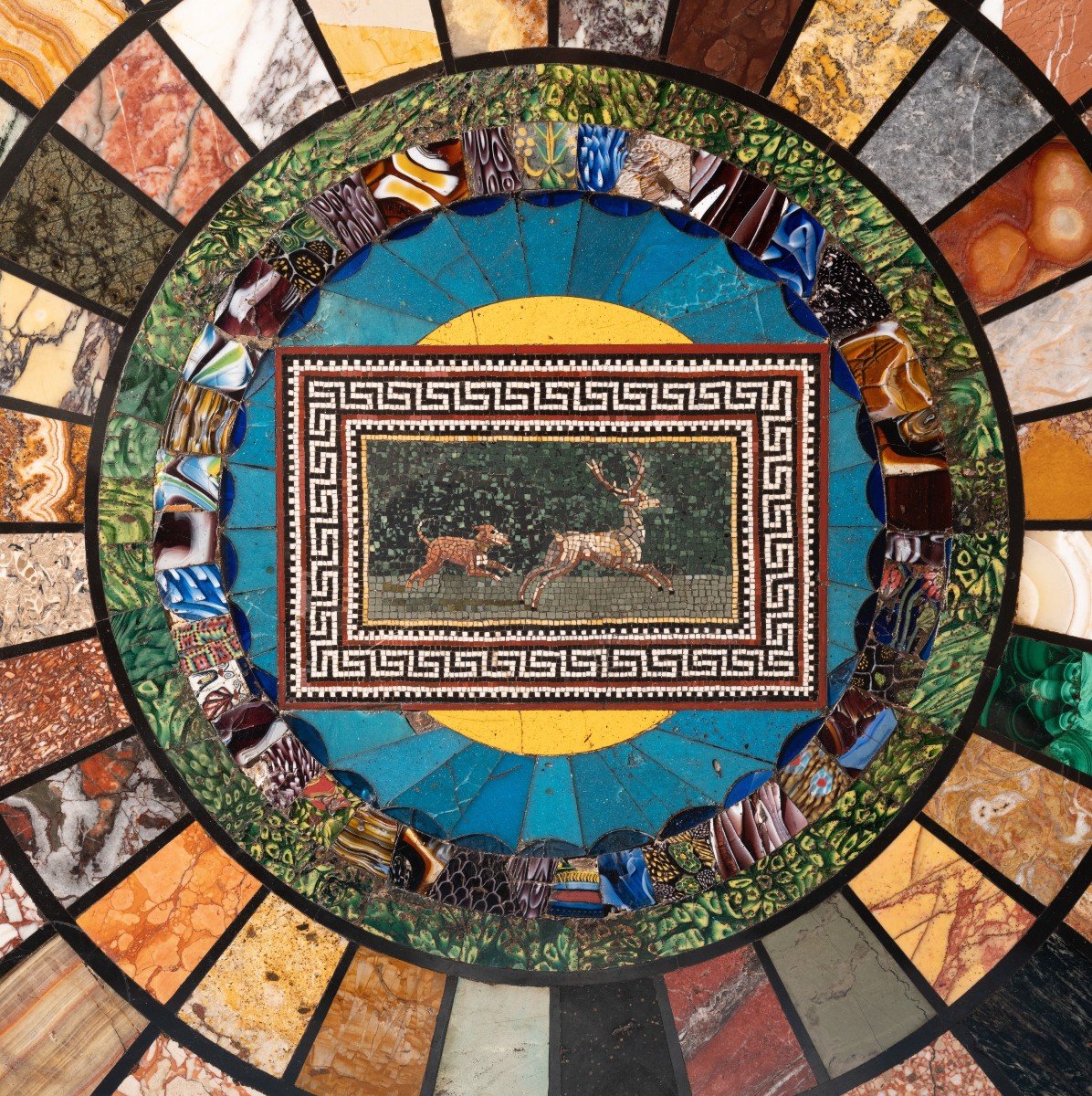
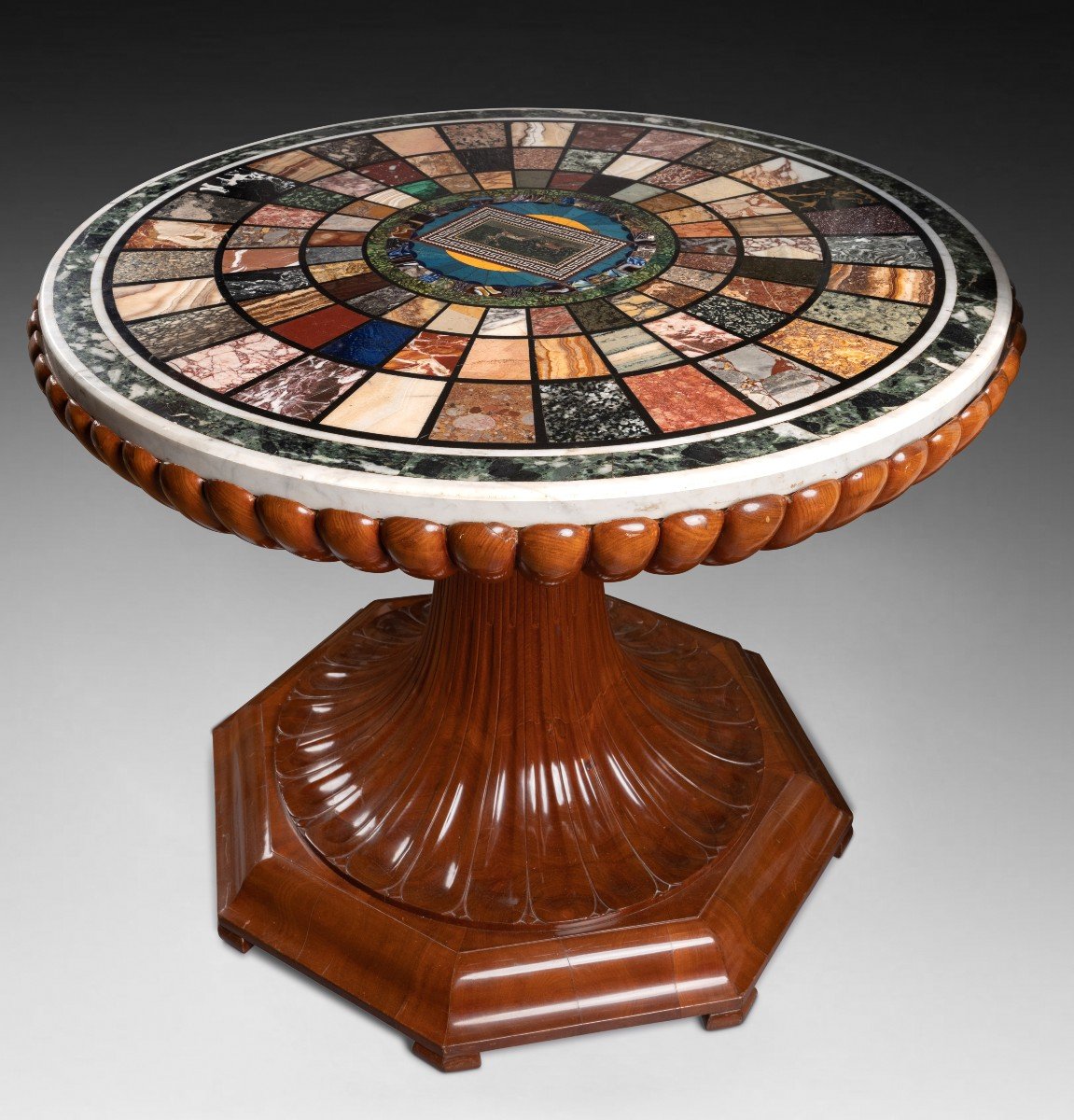
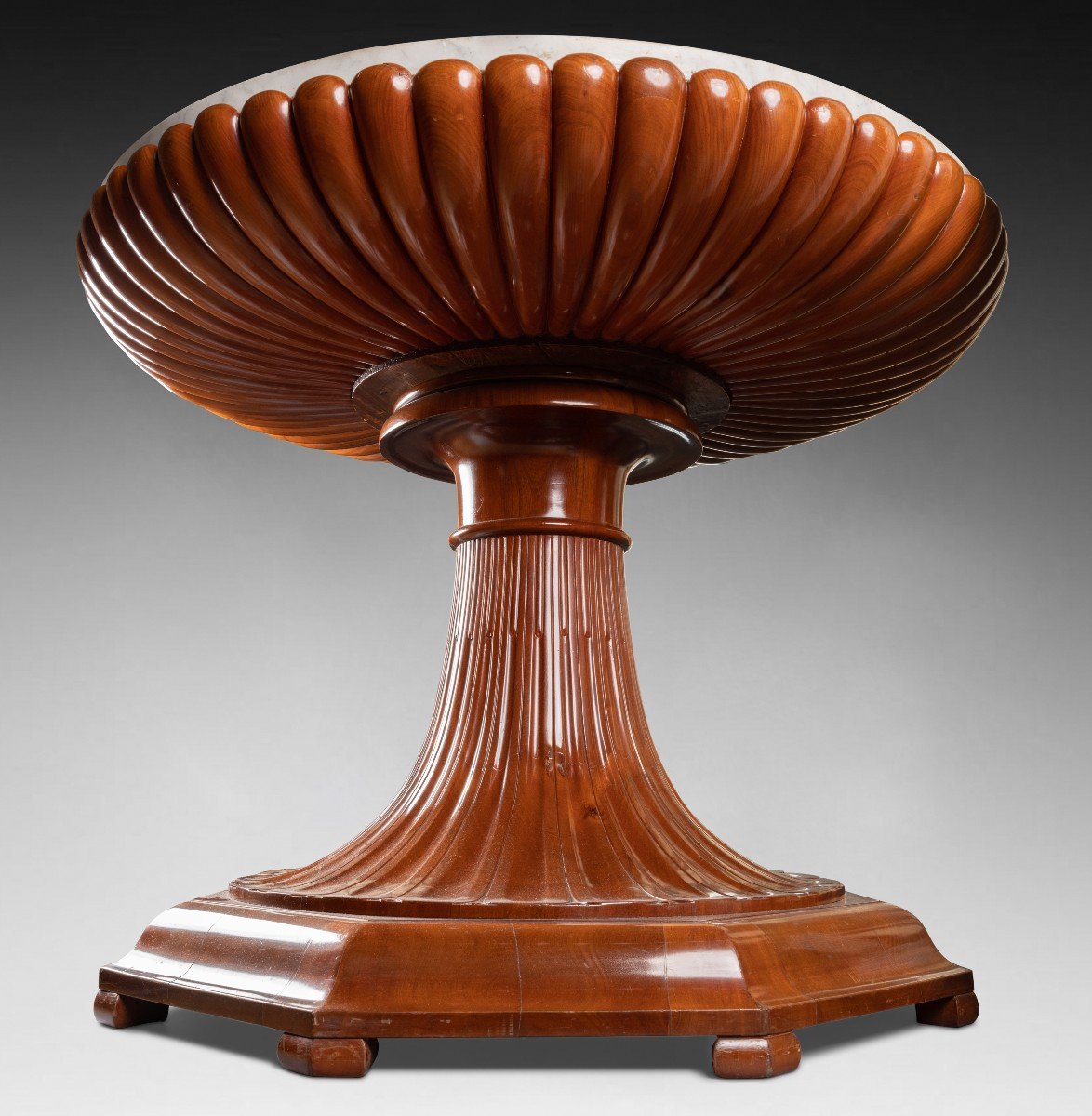

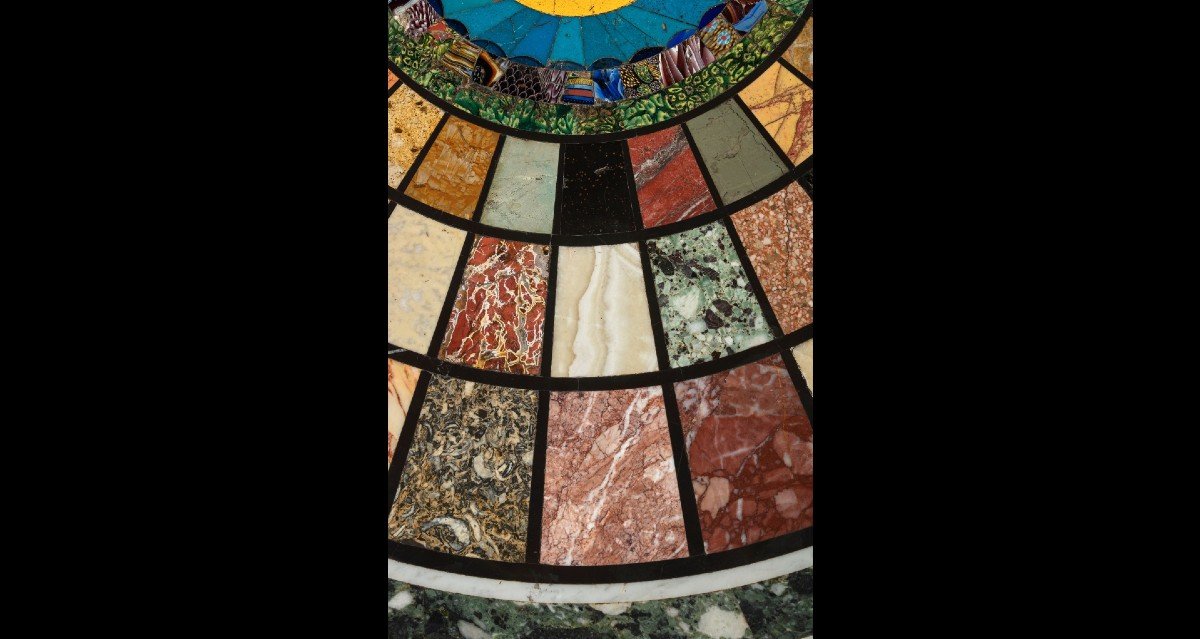













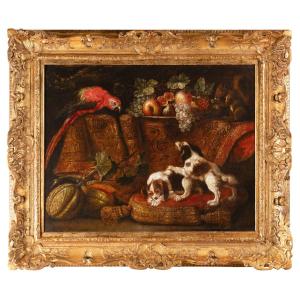

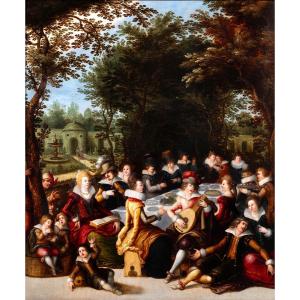
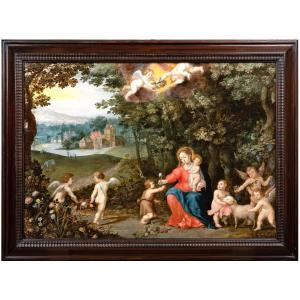

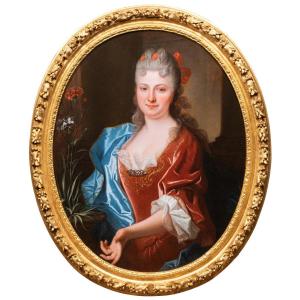







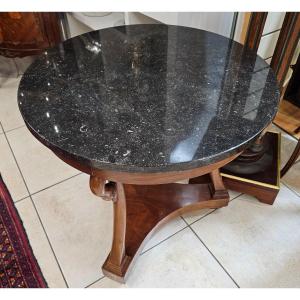

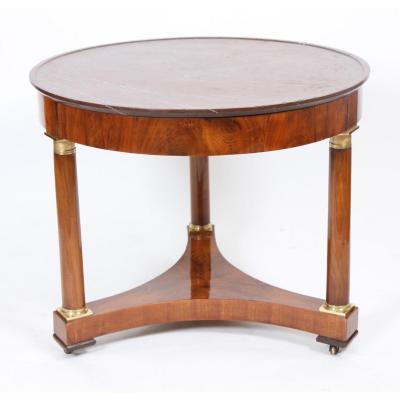
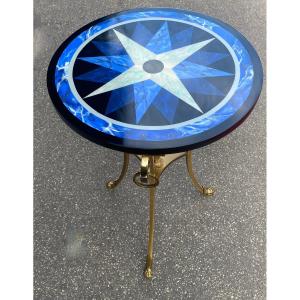




 Le Magazine de PROANTIC
Le Magazine de PROANTIC TRÉSORS Magazine
TRÉSORS Magazine Rivista Artiquariato
Rivista Artiquariato